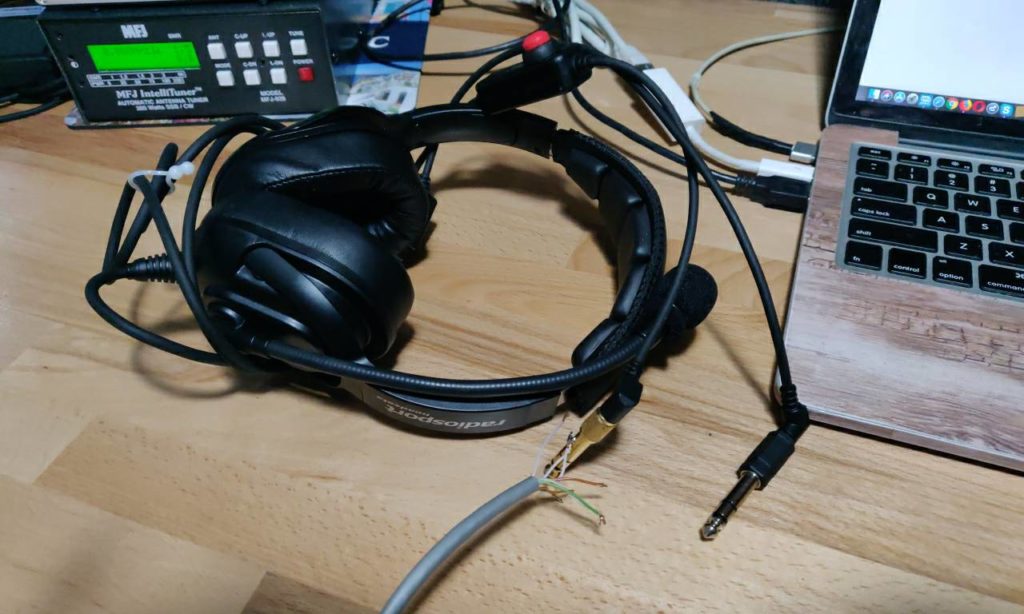Súťaženie je druh prevádzky, ktorý u amatérov často vyvoláva protichodné reakcie. Prečo toľko amatérov tak vášnivo súťaží? Čo je na tom také vzrušujúce? A čím to je, že iní amatéri nenachádzajú v súťažení nič príliš zaujímavé? Ponúkame vám bližší pohľad na tento druh prevádzky.
Ľudia majú súťaženie vo svojej povahe. Stretnete sa s ním na burze, kde sa spoločnosti snažia zvýšiť ceny svojich akcií čo najvyššie, vo filmovom priemysle, kde sa sleduje víkendová tržba pri uvedení nových filmov, a samozrejme v športe, kde sa súťaží na všetkých úrovniach: od veľmi dobre organizovaných profesionálnych futbalových tímov až po pár klubových hráčov, ktorí v sobotu dopoludnia odbíjajú na kurte v Dolnej Hornej tenisovú loptičku tam a späť. Premýšľali ste niekedy o súťažení? Prečo nesúťažíte vy? Myslíte si, že na to nemáte fyzicky? V rádioamatérskych súťažiach fyzická dispozícia nie je dôležitá. Myslíte si, že je to nákladné? Nie je! Potrebujete špeciálne zariadenie? Nepotrebujete, priemerné vybavenie je na začiatok postačujúce. Je to ťažké? Nie je! Je to zábavné? ÁNO! Môžete prekonať výsledok dosiahnutý v OK? ÁNO!
Súťaženie sa traduje takmer od začiatku amatérskeho vysielania. Hneď po prvej svetovej vojne bola snaha preskúmať krátke vlny a nadviazať spojenie na stále väčšie a väčšie vzdialenosti. Boli stanovené časové obdobia na nadviazanie transatlantického spojenia. Úspech sa dostavil rýchlo a z týchto období sa nakoniec vyvinuli ARRL DX Contest-y. Za uplynulých 80 rokov sa, samozrejme, veľa zmenilo a podmienky súťaží boli postupom času upravované. Všetky súťaže majú rovnaký základný princíp, rozdielne sú iba špecifiká, ktoré dávajú jednotlivým súťažiam zvláštny charakter. Vždy je cieľom nadviazať počas súťaže čo najviac spojení s inými súťažiacimi stanicami a pritom získať čo najviac násobičov. Násobiče v danej súťaži sú stanovené v jej podmienkach.
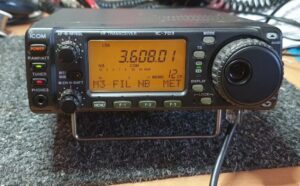
Pri tzv. DX contestoch sú ako nový násobič započítavané zvyčajne krajiny podľa zoznamu DXCC, so stanicami ktorých bolo nadviazané spojenie. Pri CQ WW DX Contest-e, ktorý je jednou z najviac obsadených súťaží, sú násobičmi krajiny a zóny, pri CQ WPX Contest-e sú násobičmi rôzne prefixy. V iných súťažiach platia ako súťažné spojenia iba tie, ktoré sú nadviazané so stanicami niekoľkých krajín, napr. OK/OM.
Nech už ide o akúkoľvek súťaž, snažíte sa nadviazať čo najviac spojení a urobiť čo najviac násobičov. Svoj bodový zisk – výsledok v súťaži – získate vynásobením týchto dvoch čísel. Jednoduché, že? Nie tak celkom! Na dosiahnutie dobrého umiestnenia je potrebné zvoliť vhodnú stratégiu, o tom však neskôr. V súťažiach sa započítavajú iba platné spojenia, teda také, pri ktorých protistanici odovzdáme svoju značku a kód spojenia, obdobné údaje od nej prijmeme a všetko potvrdíme.
Kód, ktorý vysielame, sa zvyčajne skladá z reportu RS alebo RST a poradového čísla nášho spojenia v súťaži; v iných súťažiach sa však ako kód odovzdáva napr. číslo zóny, vek operátora, okresný znak a pod., alebo aj zložitejší kód.
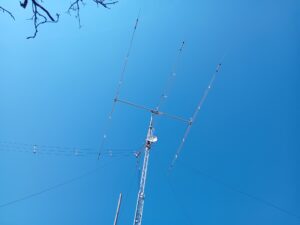
Pri súťaži sa snažíme nadviazať čo najviac spojení, pracuje sa teda rýchlo a správne odovzdanie kódov je otázkou prevádzkovej zručnosti a efektívnosti prevádzky. Hlavné súťaže trvajú celý víkend (48 hodín). Dobré súťaže sú súťaživé. Veľmi súťaživé – a v tom je trochu problém. Pásmo je plné súťažiacich staníc, ktoré sa ponáhľajú – chcú dosiahnuť najvyšší výsledok tým, že minimalizujú straty času. Spojenia sú rýchle a uponáhľané, niet času na zdvorilosti.
Ostatní, ktorí nesúťažia, by chceli na pásme kúsok pokojného miesta na bežnú prevádzku, ale počas niektorých víkendov, keď prebiehajú veľké súťaže, je to beznádejné. Väčšinou sa to zaobíde len sťažnosťami, ale niekedy takáto situácia vyústi aj do úplne neamatérskeho správania. Na pásmach sa však dá nájsť miesto aj pre súťažiacich, aj pre nesúťažiacich – stačí len trochu tolerancie a pochopenia, prípadne využitie WARC pásiem.
Ako začať?
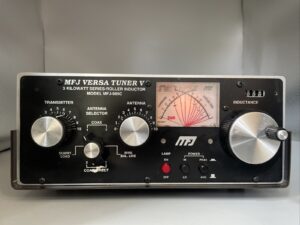
Predpokladajme, že máte dobrodružnú povahu a rozhodli ste sa skúsiť súťaženie. Ako začať? Najprv si to dobre premyslite. Ak sa v sobotu ráno rozhodnete, že zapnete zariadenie, vrhnete sa do súťažného zmätku a nakoniec získate dobré umiestnenie, ste na najlepšej ceste k sklamaniu.
Spomeňte si, že každý predajca nejakého zariadenia upozorňuje nových používateľov, aby si prečítali návod na obsluhu. Rovnaké by to malo byť aj u začínajúcich súťažiacich: prečítajte si vopred podmienky súťaže – sú zverejňované v amatérskych časopisoch alebo ich nájdete na internete.
Väčšinou nejde o viac než jednu až dve strany. Čítajte a sledujte rubriky o súťažiach vo všetkých amatérskych časopisoch, ktoré zoženiete. Nájdete tam výsledky rôznych minulých súťaží i upozornenia na termíny a podmienky blížiacich sa súťaží – malých i veľkých, jednopásmových, napr. CQ 160 Meter Contest, súťaží pre menej bežné druhy prevádzky, ako napr. CQ/RJ RTTY Contest, či ešte špecializovanejších, ako je ARRL EME Contest.
Na niektoré z týchto súťaží ešte nebudete pripravení, ale je dobré vedieť, čo sa kde deje.
Keďže sa v súťažiach používa špecifický žargón, možno vám spočiatku informácie nebudú celkom jasné, ale čoskoro im porozumiete – všetko je väčšinou jednoduché a logické.

Stretnete sa napr. s výrazmi single-op, multi-op a multi-multi. Znejú tajomne, no po prečítaní podmienok zistíte, že ide len o skratky rôznych kategórií:
- Single-op – jeden operátor, úplne sám, bez pomoci, bez DX clusteru.
- Multi-op – skupina operátorov, ktorí sa striedajú pri jednom vysielači.
- Multi-single – viac operátorov, ale v každom okamihu iba jeden vysielač v prevádzke.
- Multi-multi – viac operátorov a viac vysielačov súčasne.
Ak máte možnosť, zájdite do niektorého klubu, kde sa niekto venuje súťaženiu, porozprávajte sa s ním a čerpajte skúsenosti. Ak nebudete príliš obťažovať, požiadajte ho, či si môžete sadnúť vedľa neho počas ďalšej súťaže a pozorovať.
Podmienky žiadnej súťaže nezakazujú, aby ste sedeli vedľa operátora a sledovali ho, pokiaľ mu nijako nepomáhate. Uvedomte si však, že súťaží a je uprostred pretekov – nevyrušujte ho a otázky si nechajte na koniec.
Doma pri svojom zariadení niekoľko hodín iba počúvajte. Zistite, čo sa deje na jednotlivých pásmach v rôznych časoch, cez deň aj v noci. Napr. v DX súťaži počas dňa neočakávajte veľký ruch na 80 metroch.
Takéto poznatky vám veľmi pomôžu pri vašej prvej účasti.
Stratégia
Teraz je čas premýšľať, ako sa zúčastniť súťaže a dosiahnuť čo najlepší výsledok. Úspech je otázkou stratégie.
Aké máte k dispozícii antény? Možno máte viacpásmovú anténu pre 20, 15 a 10 metrov a drôtové dipóly pre nižšie pásma.
Niektoré súťaže, napr. CQ WPX, majú špeciálnu kategóriu pre stanice s malým výkonom (100 wattov a menej) a jednoduchými anténami.
Preštudujte si podmienky (a ak môžete, aj výsledky z minulého roka) a zistite, kde máte najväčšiu šancu na dobré umiestnenie. Potom sa začnite pripravovať.
Až neskôr, so skúsenosťami a lepšími podmienkami, môžete uvažovať o výkonnejších anténach.
Praktické tipy
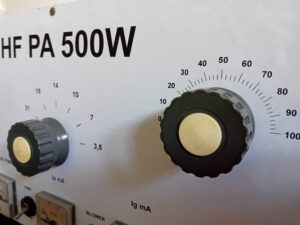
Ak nejazdíte CW, súťaž je ideálnou príležitosťou na zlepšenie – poskytuje tvrdé, ale efektívne cvičenie.
Mnohí úspešní amatéri začínali tak, že:
- použili pamäťový kľúč,
- pripravili si dopredu svoju značku a kód,
- počúvali, kým nezachytili značku protistanice,
- a až potom zavolali.
V súťažiach sa reporty zvyčajne dávajú 59 na SSB a 599 na CW – nezávisle od skutočnej čitateľnosti. Tento zvyk zjednodušuje prevádzku.
Počas súťaže je veľmi dôležité prehľadne zapisovať denník:
- značky staníc,
- prijaté a odoslané kódy,
- čas (v UTC).
Denník sa po súťaži posiela vyhodnocovateľovi. Dnes väčšina amatérov používa počítačové programy, ktoré minimalizujú chyby, neumožnia duplicitné spojenia a automaticky počítajú výsledok.
Záver
Súťaženie je zábavné. Obľúbite si ho, keď sa zúčastníte niekoľkých súťaží. Nie je to také strašné. Stačí to skúsiť.
Jan Kučera, OK1NR
